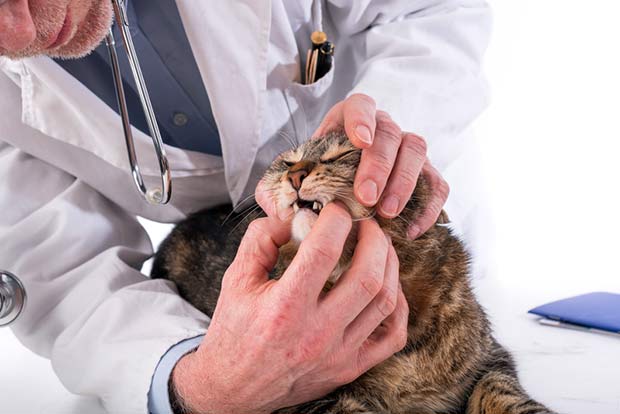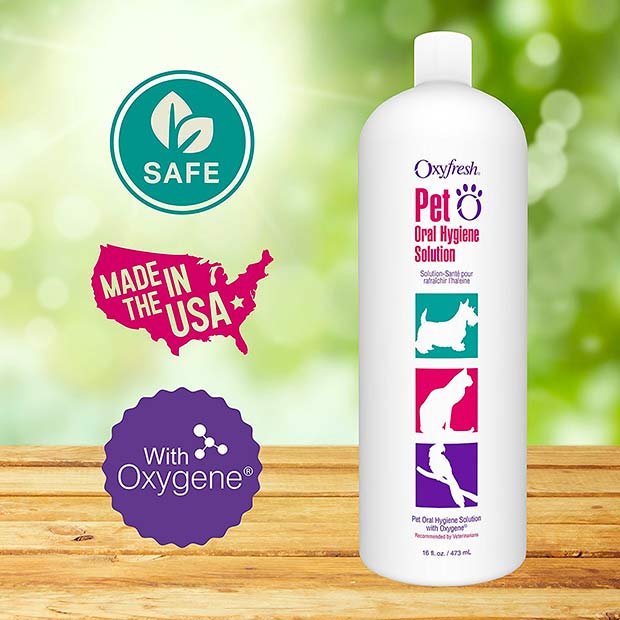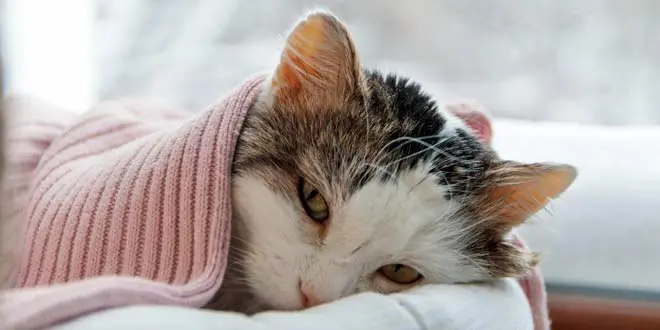[ads1][dropcap]W[/dropcap]hether you own a stray adopted from your local shelter or one of the most expensive cat breeds in the world, cat lovers are known for spoiling their feline companions.
So when one of our beloved pets is in pain, it’s no wonder that most cat owners will go to great lengths to get them help.
In fact, in 2011 alone, cat owners in the U.S. spent more than $7.4 billion on vet visits and medical care.
Even with lots of loving care, cats can still develop diseases and conditions that can be painful, and dangerous for their overall health.
One of those conditions is stomatitis in cats.
This painful, ugly disease, if left untreated, can cause your pet to experience severe pain, weight loss, and more. Knowing the signs, and what you can do to help prevent stomatitis in cats from developing in the first place, is essential.
That’s why we are breaking down everything that you need to know about stomatitis in cats, so that you can be ready to prevent or treat this terrible condition in your own beloved feline.
What is Stomatitis?
Sometimes referred to as oral inflammatory disease or gingivostomatitis, stomatitis is an inflammatory disease that attacks your cat’s mouth.
Stomatitis causes the development of painful inflammation and ulcers that form in the back of your cat’s mouth, and on his or her tongue, lips, and gums.
It’s an extremely painful condition for your cat to have. It can also lead to many other health problems. Because the inflammation is painful and concentrated at the back of your cat’s mouth, it could cause your cat to stop eating, resulting in dangerous weight loss if left untreated for too long.
Stomatitis is often associated with being caused by other medical conditions that your cat may have. These include feline leukemia, bartonellosis, dental disease or the feline immunodeficiency virus. But it can also arise seemingly on its own. It affects cats of all ages and breeds.
If left untreated, stomatitis will worsen, and can cause your cat’s teeth to fall out.
How to Tell Whether Your Cat has Stomatitis

If your cat is already in the late stages of stomatitis, there will be no mistaking it.
Even if his or her teeth have not begun to fall out, the swelling in their mouth will be obvious.
In the earlier stages, other signs can help you determine whether or not your pet has developed stomatitis.
Symptoms of Stomatitis
Excessive drool can be a sign that something is going on in your cat’s mouth.
A sudden refusal to eat can also be an early sign, and will get worse as the stomatitis progresses. Extreme weight loss is often associated with stomatitis in cats that has progressed to a later stage.
So, what causes stomatitis in cats?
Before you assume that stomatitis in cats is to blame for your pet’s weight loss, consider other factors. Changes in diet can also be to blame. While you should aim to give your pet a healthy diet, gradual changes are best to avoid a sudden change that could cause your cat to stop eating entirely.
The ulcers in your cat’s mouth will also cause them to develop very bad breath, that can sometimes be smelled from several feet away.
They may begin to pay at their mouth or face as the pain worsens. They will stop caring for their coat, which can give their fur a dirty, unkempt look.
Excessive build up of plaque and fluid in the gums can also be a sign of stomatitis in cats, though both symptoms are tough to detect. If your cat has developed stomatitis or other oral conditions, they will be unlikely to let you touch their mouth or open their jaw.
Instead, it’s important to pay attention to other outward symptoms, such as weight loss, excessive drooling, or lost teeth, and immediately take your pet to the vet is your suspect that they may have developed stomatitis.
Getting an Official Diagnosis
If you suspect that your pet has stomatitis, it’s essential to get him or her to a vet right away.
While there are more treatment options when the disease is caught early, even in advanced cases of stomatitis in cats, your vet will be able to help alleviate some of the pain and make your cat more comfortable.
Because of the pain, even the most cooperative cats will likely fight against having their mouth examined if they have developed stomatitis. Your vet may have to sedate your feline in order to properly examine their mouth and make a diagnosis.
While an oral examination is required to identify stomatitis, your vet may also run blood tests to check for any possible underlying conditions, like bartonellosis.
Stomatitis in cats is a very serious, painful condition. Pet owners cannot make an accurate diagnosis, or treat their cat properly, without the help of an experienced vet.
Treatment Options for Stomatitis in Cats
There are several different treatment options for dealing with stomatitis in cats. Which your vet chooses will depend on how advanced the condition is, how old your cat is, and several other factors.
Treating the Pain First
The first thing that your vet will likely do if they diagnose your cat with stomatitis is to help alleviate some of your cat’s pain.
Stomatitis is extremely painful, and because of that, my prevent your cat from eating properly, which can cause other issues. Especially if your cat is older, extreme weight loss can have serious consequences.
Anti-inflammatory steroids will help to reduce the swelling and ulcers in your cat’s mouth, which can provide some relief. These steroids will usually have to be administered daily, or several times a day, in order to work properly.
Dealing with Infections
If your cat’s stomatitis has progressed past swelling and on to infection, then your vet will treat that next.
Antibiotics will be used to stop any infections that have already started, and prevent other ulcers from becoming infected. Once these begin to work, they will also help to alleviate some of your cat’s pain.
Administering Medication
One of the factors that make stomatitis in cats so difficult to treat is how difficult it is to administer medications.
While cats can usually be fed pills or have pills concealed in their food when they need to take medication, if your cat’s stomatitis has progressed and they have trouble eating, it can be tough to get them to take a pill.
For that reason, your vet will likely inject the first doses of anti-inflammatory medication and antibiotics.
If your cat’s stomatitis has progressed far enough that the first doses do not take care of the swelling and infections enough to allow your cat to eat, you may have to return to the vet several times for additional injections.
Once your cat is able to eat on its own again, you’ll be able to start administering pills by mouth at home.
Cleaning Your Pet’s Mouth
Once the inflammation, infection, and pain have been treated, the next thing that your vet will want to do is thoroughly clean your pet’s mouth.
They will clean your cat’s entire mouth, including below the gum line, to help make sure that no built-up plaque or bacteria is left behind. This will help promote healing and prevent stomatitis from beginning to form again.
Advanced Cases of Stomatitis in Cats
The above treatments can be very effective in reducing stomatitis in cats. But if your cat’s stomatitis has progressed past infections and inflammation, and begun to cause your cat to lose its teeth or caused damage to the gums, further treatments might be necessary.
One option is to remove your cat’s teeth. This drastic measure is only used when stomatitis is so advanced that it can’t be gotten rid of without removing damaged teeth or tissue.
While this sounds drastic, with soft food at first, and proper care, house cats can actually live a normal, comfortable life without their teeth. After your cat has healed, they may even be able to return to eating certain types of kibble.
If your vet decides to remove your cat’s teeth, they’ll do so through an oral surgery, and your cat will be sedated.
Some vets choose to remove the teeth of cats with advanced stomatitis right away, to prevent the disease from worsening and causing even more pain for your cat. Others prefer to wait to see whether your cat’s stomatitis will respond to medication and other treatments.
Some cats seem to be more prone to developing stomatitis than others, whether because of underlying causes or other factors. If this is the case, regular care, through professional dental cleanings or antibiotics, might be necessary.
Because stomatitis in cats can be caused by other, more serious underlying conditions, your cat may need additional treatment even after the stomatitis is gone or under control.
Talk to your vet about your cat’s treatment options to learn more about what options might be best for your cat.
Countering Weight Loss
If your cat lost weight as a result of stomatitis, your vet may also recommend dietary supplements.
In extreme cases, you cat may need to remain at the vet in order to be manually fed or have supplements administered to them.
If you cat hasn’t lost a lot of weight, or if it started more recently, you vet may simply prescribe dietary supplements to be administered once your cat is able to eat on their own again.
Preventing Stomatitis in Cats
Once your cat has already developed stomatitis, there is little that you can do at home to treat it.
But there are plenty of things that you can start doing right away to keep your cat from developing stomatitis in the first place.
Regular teeth and gum cleanings are essential for all cats, not just those who have had stomatitis. Your vet may also recommend an oral rinse for your cat that can help prevent bacteria and plaque from building up in your cat’s mouth.

There are also topical ointments that can be used to prevent inflammation in your cat’s gums.
In between cleanings, you can also promote oral health in your cat by giving them treats and chews designed to keep their teeth healthy and fresh.
Other Oral Diseases that Could Be Causing Your Cat’s Symptoms
There are other oral diseases that can cause a cat to develop symptoms that are similar to those caused by stomatitis.
Certain skin diseases can affect the area around your cat’s lips, and can even cause them to develop ulcers along the front of their gums. Cancers of the mouth, or oral neoplasia, can also cause similar symptoms, including ulcers and a refusal to eat.
Other conditions are less serious, but can still cause similar symptoms.
Gingivitis, for instance, is a common dental disease that can easily be treated. This can cause swelling and bad breath in your cat. It should be treated with cleanings and proper oral care, or else it could worsen, and even lead to stomatitis.
Caring for Your Cat’s Health and Well-Being
From dressing them up in jewelry to buying them fancy beds and even hammocks, it’s no secret that we love to spoil our feline friends.
Which is why we should make an effort to spoil their health as well.
Regular cleanings and proper oral care can go a long way towards preventing stomatitis in cats. If your cat develops an underlying condition and does develop stomatitis, watching for the signs and symptoms so that you can get them immediate care is essential.
If you don’t have a cat, don’t let the horror stories about stomatitis scare you away.
Cats can be a wonderful addition to any family or a great companion for those living alone. They provide care and companionship that can’t be rivaled by other pets.
Still not convinced? Visit one of our forums to hear real Bengal Cat owners gush about their beloved felines, and to learn more about this wonderful breed.




